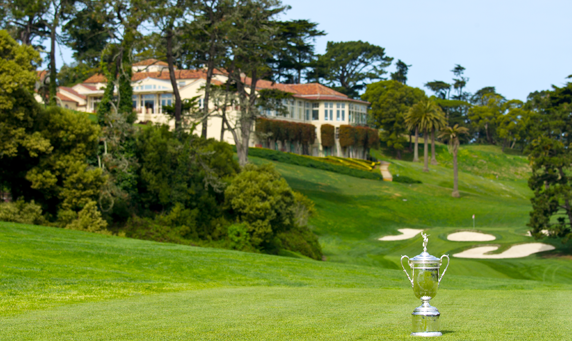
If you’re a serious golfer, you no doubt know that the U.S. Open will be played this month at The Olympic Club in San Francisco. But what you might not know is that the club boasts an impressive, Olympic-related history that reaches back more than 150 years.
According to its website, The Olympic Club was founded on May 6, 1860, when 23 charter members turned what had been informal backyard gymnastics training sessions into a lasting institution. The by-laws stated that the purpose of the Club was “to strengthen and improve the body by gymnastic exercises.”
Early membership was limited due to small, stark facilities, but by moving into a series of larger, better-equipped quarters, the Club’s membership rolls expanded, allowing it to boast that “nearly every person of note in San Francisco was or had been a member,” including William Randolph Hearst, Charles Crocker and Leland Stanford. Early well-known athletes included Philo Jacoby, an expert marksman declared “Champion Rifle Shot of the World” in 1876 and “Gentleman Jim” Corbett, the famous boxer who won the world heavyweight title in 1892
Still, Olympians wanted a permanent clubhouse to call home, so, in 1888, the membership approved the purchase of land on Post Street and the plans of architect Henry A. Schulze for a building. Three years later, on April 8, 1891, a groundbreaking ceremony was held, with City Clubhouse opening in January of 1893.
Rory McIlroy leads the way as the U.S. Open returns to historic Olympic Club
Olympians enjoyed their new home for 13 years, until the Great San Francisco Earthquake and the ensuing fires destroyed the Clubhouse in 1906. Determined to create something better than they had before, the Olympians joined together, and, in June of 1912, the new City Clubhouse and natatorium opened.
By then, amateur athletics was booming across the country, and The Olympic Club became a West Coast powerhouse, facing the best the East Coast had to offer and frequently winning. Between 1890 and 1920, the Club “fielded its first rugby, basketball, soccer, water polo and lacrosse teams, while continuing to sustain a multitude of other sports, including swimming and diving, wrestling, gymnastics, handball, baseball, football, fencing, tennis, boxing, bowling, and billiards.”
The Club also hosted local, regional, and national athletic tournaments during this time, and sent members to national and international competitions, including the Olympic Games. In 1924 alone, the club sent 23 Olympians to the Olympics in Paris, the largest single delegation from a club.
Golf came into play when the Club assumed control of the financially distressed Lakeside Golf Club in 1918, thus gaining the 18-hole course designed by Wilfred Reid. By 1922, the Club purchased enough acreage to replace the original course with two 18-hole courses and also build a new clubhouse.
The Lakeside clubhouse, designed by famed architect Arthur Brown, Jr. (who also designed the San Francisco City Hall) opened in 1925. Willie Watson designed and Superintendent Sam Whiting constructed the first Ocean (Pacific Links) and Lake Courses in 1924. Due to storms during the winter of 1925-’26, the second Lake Course (today’s) and Ocean course, designed by Sam Whiting, opened in 1927.
If history is any indication, a surprise winner will be crowned at Olympic
In 1955, the Club hosted its first U.S. Open, which came down to a playoff between Jack Fleck and Ben Hogan, with Fleck, an unknown golf professional, clenching the coveted title. When Billy Casper won over Arnold Palmer at the 1966 U.S. Open, the Lake cemented its reputation as a host of upsets and “a graveyard of great golfers.” The course lived up to its reputation when Scott Simpson won the 1987 Open over Tom Watson and Lee Janzen won over Payne Stewart in 1998.
This month, the Club will host its fifth U.S. Open, but it remains much more than a country club. Among many other recent accomplishments in recent years, members have brought home Olympic medals, international water polo titles, Masters swimming records and built a national competitive basketball program.
For more information, visit www.olyclub.com.
Enjoy your walk,
Eric Woods
